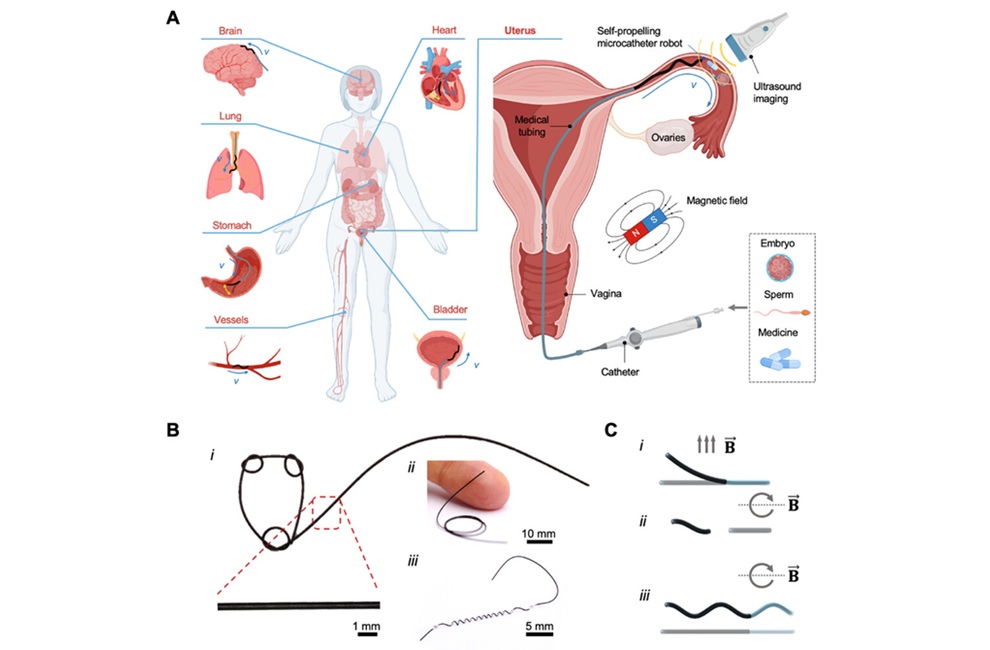New Simplified Rapid COVID-19 Testing Protocol Requires Less Labor, Expertise and Equipment
|
By HospiMedica International staff writers Posted on 13 Jan 2021 |
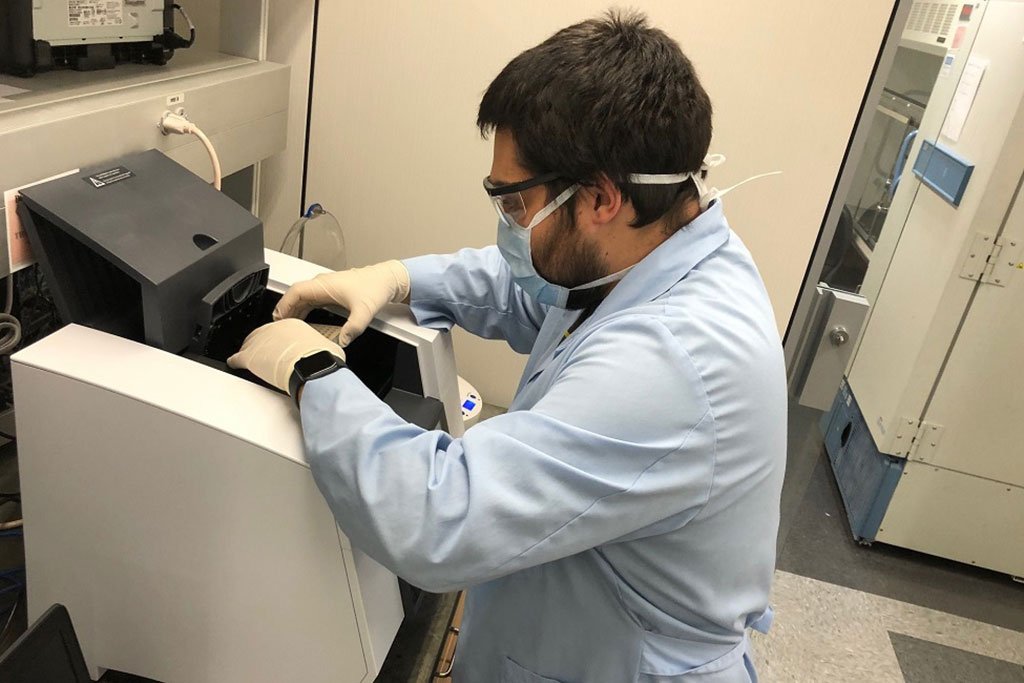
Image: Sean Paz, co-author and a graduate student in FAU’s Schmidt College of Medicine, loads COVID-19 tests in a PCR (polymerase chain reaction) machine (Photo courtesy of FAU).
A simplified COVID-19 testing protocol that offers a distinct advantage over the standard viral or universal transport medium (VTM) can detect minimal quantities of the SARS-CoV-2 using samples from both upper respiratory tract swabs (nasal and throat) as well as saliva, and can be used in research laboratories with minimal molecular biology equipment and expertise.
The testing protocol developed by researchers at the Schmidt College of Medicine at Florida Atlantic University (Boca Raton, FL, USA) aims to meet the urgent need for introducing alternative reagents and approaches to provide nucleic-acid testing in the face of heightened demand and potential shortages. The protocol utilizes TRIzol (guanidinium thiocyanate/phenol-chloroform) to purify the viral RNA from different types of clinical specimens, requires minimal biosafety level precautions and, given its high sensitivity, can be easily adapted to pooling samples strategies. Using this simplified protocol, samples are eluted in TRIzol immediately after collection and RNA is extracted. Results have shown that this protocol is as efficient, if not more than the CDC-approved silica-membrane based RNA purification microcolumns in isolating small amounts of viral and cellular RNA from multiple types of samples (nasal and throat swabs and saliva).
With this new approach, samples are first pooled and tested; positive pools are then retested individually. This relatively simple solution decreases the testing resources used but results in a loss in sensitivity from diluting positive patient samples with negative ones, hence the need of highly-sensitive tests that utilize biological materials, like saliva, which can be obtained in larger amounts and can be easily preserved for re-testing. The protocol uses common chemical reagents that are in abundant supply and can isolate high-quality RNA that can be utilized for multiple assays and RNA sequencing projects. In addition, samples in TRIzol can be preserved at 4 C for more than a week with minimal degradation and little to no loss of viral RNA. Moreover, the ability to use saliva samples, which are as- or more sensitive and reliable than nasopharyngeal swabs, offers an attractive specimen alternative.
“The high sensitivity of our protocol may be useful in testing patients with low viral titers such as asymptomatic patients or testing individuals prior to quarantine release. Our method also enables several patient samples to be pooled, decreasing the number of tests required for larger populations,” said Massimo Caputi, Ph.D., lead author and a professor of biomedical science in FAU’s Schmidt College of Medicine. “In addition, testing can easily be carried out by any research laboratory equipped with minimal standard equipment. Since saliva can be utilized as a reliable source of virus, samples can be self-obtained by patients and inactivated in TRIzol, eliminating the need for medical staff and higher-level biosafety protocols and facilities.”
Related Links:
Florida Atlantic University
The testing protocol developed by researchers at the Schmidt College of Medicine at Florida Atlantic University (Boca Raton, FL, USA) aims to meet the urgent need for introducing alternative reagents and approaches to provide nucleic-acid testing in the face of heightened demand and potential shortages. The protocol utilizes TRIzol (guanidinium thiocyanate/phenol-chloroform) to purify the viral RNA from different types of clinical specimens, requires minimal biosafety level precautions and, given its high sensitivity, can be easily adapted to pooling samples strategies. Using this simplified protocol, samples are eluted in TRIzol immediately after collection and RNA is extracted. Results have shown that this protocol is as efficient, if not more than the CDC-approved silica-membrane based RNA purification microcolumns in isolating small amounts of viral and cellular RNA from multiple types of samples (nasal and throat swabs and saliva).
With this new approach, samples are first pooled and tested; positive pools are then retested individually. This relatively simple solution decreases the testing resources used but results in a loss in sensitivity from diluting positive patient samples with negative ones, hence the need of highly-sensitive tests that utilize biological materials, like saliva, which can be obtained in larger amounts and can be easily preserved for re-testing. The protocol uses common chemical reagents that are in abundant supply and can isolate high-quality RNA that can be utilized for multiple assays and RNA sequencing projects. In addition, samples in TRIzol can be preserved at 4 C for more than a week with minimal degradation and little to no loss of viral RNA. Moreover, the ability to use saliva samples, which are as- or more sensitive and reliable than nasopharyngeal swabs, offers an attractive specimen alternative.
“The high sensitivity of our protocol may be useful in testing patients with low viral titers such as asymptomatic patients or testing individuals prior to quarantine release. Our method also enables several patient samples to be pooled, decreasing the number of tests required for larger populations,” said Massimo Caputi, Ph.D., lead author and a professor of biomedical science in FAU’s Schmidt College of Medicine. “In addition, testing can easily be carried out by any research laboratory equipped with minimal standard equipment. Since saliva can be utilized as a reliable source of virus, samples can be self-obtained by patients and inactivated in TRIzol, eliminating the need for medical staff and higher-level biosafety protocols and facilities.”
Related Links:
Florida Atlantic University
Latest COVID-19 News
- Low-Cost System Detects SARS-CoV-2 Virus in Hospital Air Using High-Tech Bubbles
- World's First Inhalable COVID-19 Vaccine Approved in China
- COVID-19 Vaccine Patch Fights SARS-CoV-2 Variants Better than Needles
- Blood Viscosity Testing Can Predict Risk of Death in Hospitalized COVID-19 Patients
- ‘Covid Computer’ Uses AI to Detect COVID-19 from Chest CT Scans
- MRI Lung-Imaging Technique Shows Cause of Long-COVID Symptoms
- Chest CT Scans of COVID-19 Patients Could Help Distinguish Between SARS-CoV-2 Variants
- Specialized MRI Detects Lung Abnormalities in Non-Hospitalized Long COVID Patients
- AI Algorithm Identifies Hospitalized Patients at Highest Risk of Dying From COVID-19
- Sweat Sensor Detects Key Biomarkers That Provide Early Warning of COVID-19 and Flu
- Study Assesses Impact of COVID-19 on Ventilation/Perfusion Scintigraphy
- CT Imaging Study Finds Vaccination Reduces Risk of COVID-19 Associated Pulmonary Embolism
- Third Day in Hospital a ‘Tipping Point’ in Severity of COVID-19 Pneumonia
- Longer Interval Between COVID-19 Vaccines Generates Up to Nine Times as Many Antibodies
- AI Model for Monitoring COVID-19 Predicts Mortality Within First 30 Days of Admission
- AI Predicts COVID Prognosis at Near-Expert Level Based Off CT Scans
Channels
Critical Care
view channel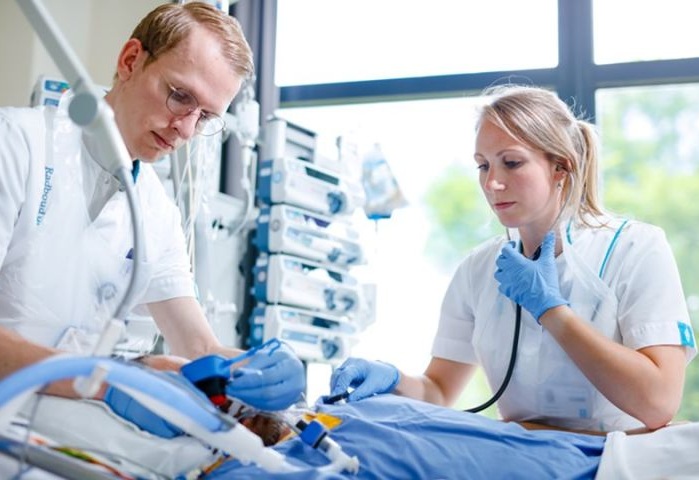
Precision Approach Improves Immunotherapy Effectiveness for ICU Patients with Sepsis
Sepsis occurs when the immune system responds abnormally to an infection, often triggering life-threatening organ failure. Despite affecting around 49 million people globally each year and causing approximately... Read more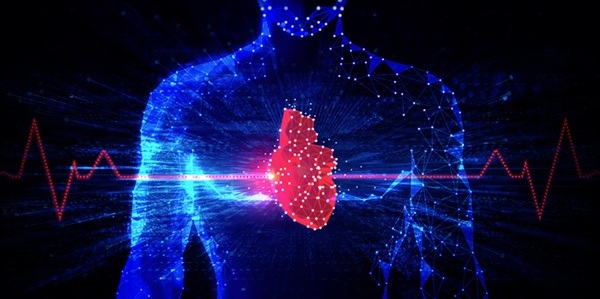
Soft Robots Could Donate Their Heart to Humans
Heart failure is a growing global health burden, and existing artificial hearts and mechanical pumps often fall short of long-term clinical needs. Many current devices rely on rigid components and complex... Read moreSurgical Techniques
view channel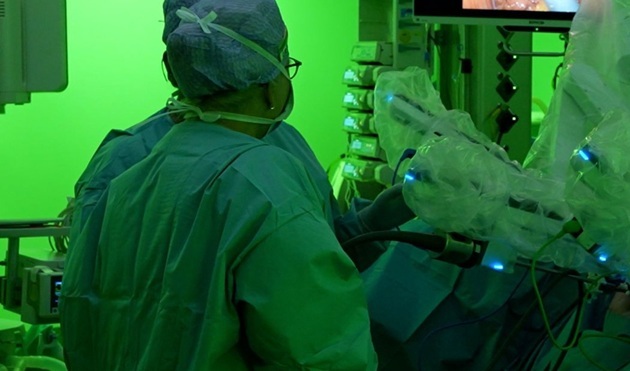
Minimally Invasive Surgery Proven Safe and Effective for Complex ‘Whipple’ Procedure
Tumors of the pancreatic head often require a highly complex operation known as pancreatoduodenectomy or the Whipple procedure. This surgery involves removing multiple structures and creating several internal... Read more
Catheter-Based Procedures Offer Less Invasive Option for Treatment of Valvular Disease
Valvular heart disease, caused by tight or leaky valves between heart chambers, affects up to 10% of older adults and leads to more than 120,000 deaths globally each year. Traditional open-heart surgery... Read morePatient Care
view channel
Revolutionary Automatic IV-Line Flushing Device to Enhance Infusion Care
More than 80% of in-hospital patients receive intravenous (IV) therapy. Every dose of IV medicine delivered in a small volume (<250 mL) infusion bag should be followed by subsequent flushing to ensure... Read more
VR Training Tool Combats Contamination of Portable Medical Equipment
Healthcare-associated infections (HAIs) impact one in every 31 patients, cause nearly 100,000 deaths each year, and cost USD 28.4 billion in direct medical expenses. Notably, up to 75% of these infections... Read more
Portable Biosensor Platform to Reduce Hospital-Acquired Infections
Approximately 4 million patients in the European Union acquire healthcare-associated infections (HAIs) or nosocomial infections each year, with around 37,000 deaths directly resulting from these infections,... Read moreFirst-Of-Its-Kind Portable Germicidal Light Technology Disinfects High-Touch Clinical Surfaces in Seconds
Reducing healthcare-acquired infections (HAIs) remains a pressing issue within global healthcare systems. In the United States alone, 1.7 million patients contract HAIs annually, leading to approximately... Read moreHealth IT
view channel
EMR-Based Tool Predicts Graft Failure After Kidney Transplant
Kidney transplantation offers patients with end-stage kidney disease longer survival and better quality of life than dialysis, yet graft failure remains a major challenge. Although a successful transplant... Read more
Printable Molecule-Selective Nanoparticles Enable Mass Production of Wearable Biosensors
The future of medicine is likely to focus on the personalization of healthcare—understanding exactly what an individual requires and delivering the appropriate combination of nutrients, metabolites, and... Read moreBusiness
view channel
Philips and Masimo Partner to Advance Patient Monitoring Measurement Technologies
Royal Philips (Amsterdam, Netherlands) and Masimo (Irvine, California, USA) have renewed their multi-year strategic collaboration, combining Philips’ expertise in patient monitoring with Masimo’s noninvasive... Read more
B. Braun Acquires Digital Microsurgery Company True Digital Surgery
The high-end microsurgery market in neurosurgery, spine, and ENT is undergoing a significant transformation. Traditional analog microscopes are giving way to digital exoscopes, which provide improved visualization,... Read more
CMEF 2025 to Promote Holistic and High-Quality Development of Medical and Health Industry
The 92nd China International Medical Equipment Fair (CMEF 2025) Autumn Exhibition is scheduled to be held from September 26 to 29 at the China Import and Export Fair Complex (Canton Fair Complex) in Guangzhou.... Read more










.jpg)



